Fans of high-quality sound appreciate the capabilities of modern audio equipment. In addition to conventional speakers, manufacturers offer modular speakers with multiple emitters. In this article we will talk about the best models of three-way speakers, and help you choose a high-quality device for home use.
Content
Features
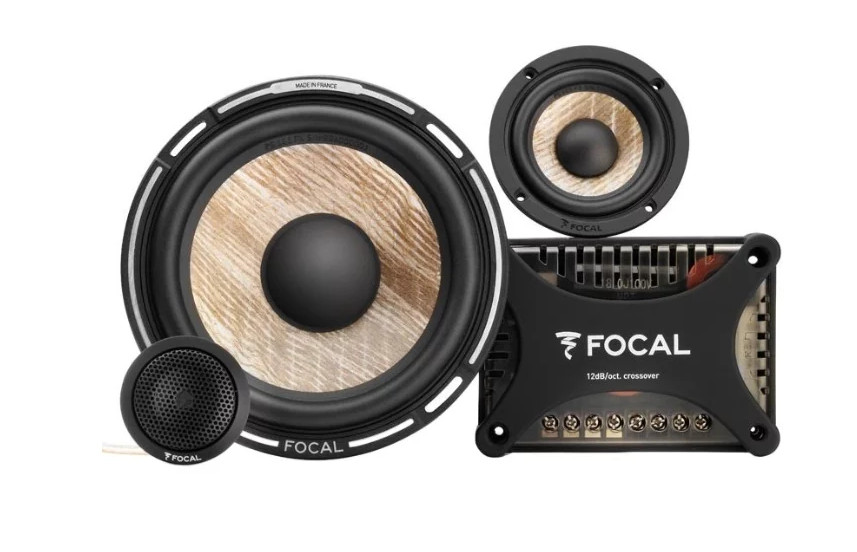
Three-way speakers - a system of three speakers that reproduce low, medium and high frequencies in separate bands. The amplitude-frequency response of such systems is much better than that of two-way devices due to the good study of different tones. The speaker acts out in piston mode, which makes the sound more clear and detailed.
Despite all the advantages of three-way systems, they have a higher cost. Due to the design features, they are more difficult to configure and install. In addition, in the budget segment, three-way and two-way speakers practically do not differ from each other in sound quality.
How to choose acoustics
There are many models of speakers that differ in design, technical specifications and individual sound features. When choosing, you should pay attention to power, frequency range, sensitivity, impedance and body materials. Here are some tips to help you buy good acoustics:
- Power. This parameter is responsible for the "strength" of sound and compatibility with other components. The power of the emitter must match the power of the amplifier, otherwise the device will quickly fail. In a small room with an area of up to 15 square meters, it is worth installing acoustics with indicators of 70-80 W, up to 25 square meters - 100 W. If the area exceeds 30 squares, you should think about buying a device with a maximum power of 150 watts. This will ensure a clean and even sound even if the room is large.
- Frequency range. All existing frequencies can be divided into three types - low, medium and high. Low are responsible for the amount of bass, medium - volume, high - vocals. It is generally accepted that the human ear hears frequencies in the range from 16 to 20,000 Hz. However, the wider the spectrum, the better the sound quality. For musical acoustics, optimal indicators are considered to be from 20 to 35,000 Hz.
- Sensitivity. This characteristic is responsible for the sound volume. The higher the sensitivity, the louder the system will play. Of course, this does not guarantee the same sound quality at different volume levels, so before buying, be sure to make sure that there are no extraneous noises. Sensitivity from 95 dB and above is considered a normal indicator.
- Impedance. The speaker resistance to alternating current depends on this parameter. The impedance of the amplifier and speaker must be at the same level, otherwise the sound quality will suffer (distortion will appear).
- Body material. The sound quality directly depends on the materials from which the enclosure of the active speaker system is made. There are models made of plastic, wood, aluminum and MDF. The most expensive devices are made of wood, but they have the best sound characteristics. Plastic and aluminum are not very suitable for speakers, as may distort the sound. The best option is MDF, because this material is cheaper than wood, but similar in properties.
When buying, you should not focus solely on technical specifications. People have different auditory perceptions, so you should listen to the speaker system yourself.In some cases, two-way devices play better than 3-way devices.
Differences between a three-way system and a two-way system
The three-component acoustics are distinguished by the best sound, since each speaker is responsible for a certain frequency band. For example, the first column reproduces low frequencies, the second column - medium, and the third - high. In two-way systems there are only two emitters and they work on the principle of LF + MF / HF or LF + MF / HF. This makes the sound less legible and detailed than in three-way or multi-way systems.
Advantages and disadvantages
Like any device, 3-way speakers have their advantages and disadvantages. They relate to sound, usability and installation complexity. Here are the pros and cons of three-way systems, compared to two-way systems:
Benefits:
- Modular acoustics with three speakers has better sound quality than systems from 2 bands;
- Shelf acoustics are great for clubs and concert halls;
- Helps to achieve a more uniform distribution of sound in the room;
- More flexible settings system;
- Wide functionality.
Disadvantages:
- Takes up more space than two-way speakers;
- It is more difficult to adjust the sound;
- It is more difficult to install, because for a uniform sound a special arrangement of modules is necessary;
- The cost is higher than that of two-way speakers;
- Repair will cost more, due to the design features.
Despite all the shortcomings, professional musicians and music lovers give preference to three-way active speakers due to improved sound characteristics. However, you should not buy devices with four or more modules, since not everyone is able to properly configure them.
Rating of the best audio systems
Manufacturers offer many options for three-way audio systems, but not all of them have high-quality sound. It is especially difficult to find a good device among representatives of automotive coaxial systems. We have compiled a rating of the top 5 best acoustics for you, based on customer reviews and ratings:
Pioneer TS-A1733i
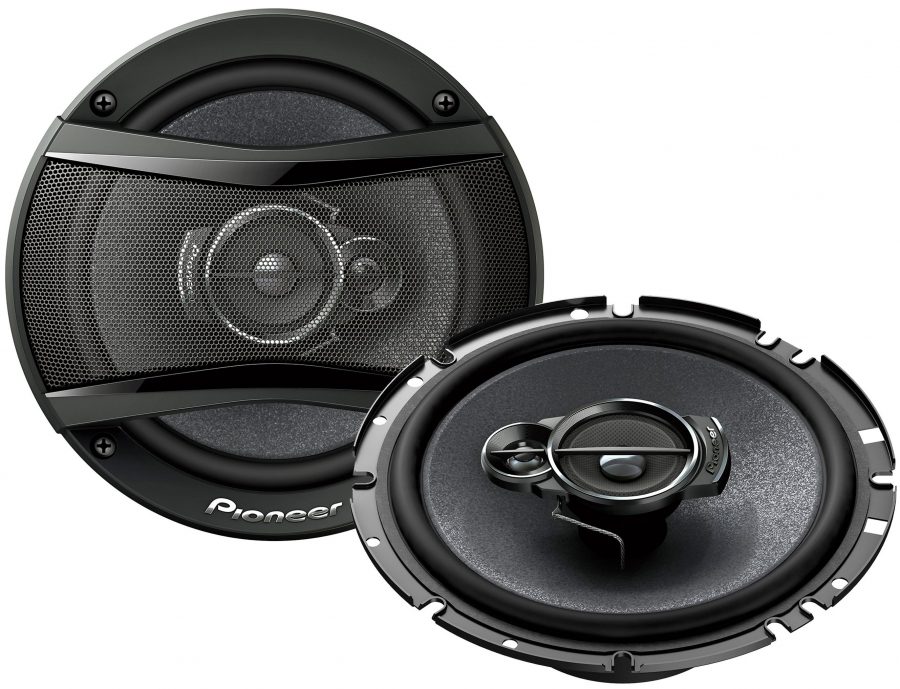
- Type of facility: car coaxial speakers
- Size: 16 cm
- Power: rated - 50 W, maximum - 300 W
- Ultimate Sensitivity (Volume): 90 dB
- Spectrum of reproduced tones: from 28 Hz to 41 000 Hz
- Impedance: 4 ohms
- Speaker sizes: Treble - 11 mm, Midrange - 42 mm, Bass - 170 mm
- Black color
- Number of speakers included: 2
- Low cost in the segment;
- Good bass;
- Does not wheeze at high volume;
- Sufficiently stiff diffuser design;
- Crystal clear sound.
- Need a good amplifier.
Budget three-way speakers for the car interior. It has a high-quality multilayer diffuser made of composite material with the addition of mica. The sensitivity is 90 dB, which is enough to fill any car with a loud sound. The package includes an installation package.
Pioneer TS-R6951S
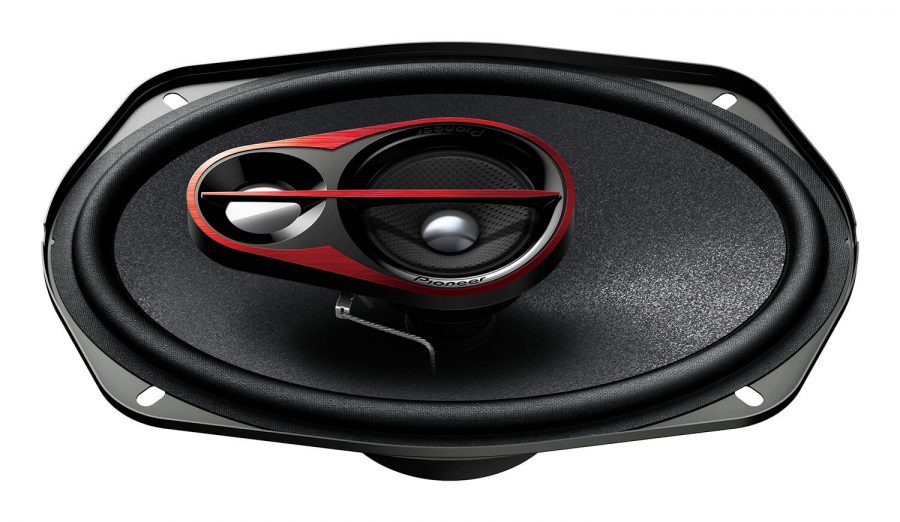
- Type of facility: car coaxial speakers
- Size: 15 by 23 cm
- Power: rated - 50 W, maximum - 400 W
- Ultimate Sensitivity (Volume): 92 dB
- Spectrum of reproduced tones: from 31 Hz to 35 000 Hz
- Impedance: 4 ohms
- Speaker sizes: Tweeter - 20 mm, Midrange - 57 mm, Woofer - 163 by 237 mm
- Color: black and red
- Number of speakers included: 2
- When setting up, they give out good power;
- Wide bass potential;
- Stylish case design;
- Quality diffuser.
- Not found.
Inexpensive coaxial speakers for a car. They are great at playing music of any style. A high-quality diffuser provides an amazing level of low frequencies and improves the midrange. Ultimately, you get crystal clear sound with good bass.
JBL Stage 9603
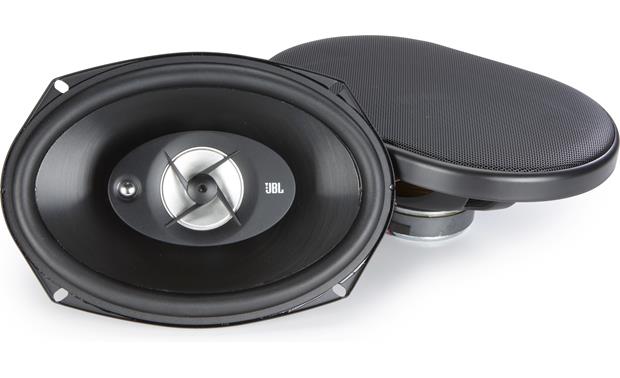
- Type of facility: car coaxial speakers
- Size: 15 by 23 cm
- Power: rated - 70 W, maximum - 210 W
- Ultimate Sensitivity (Volume): 92 dB
- Spectrum of reproduced tones: from 45 Hz to 20 000 Hz
- Impedance: 4 ohms
- Black color
- Warranty period: 1 year
- Number of speakers included: 2
- Do not wheeze even at high volume levels;
- Pronounced bass;
- Almost invisible in the cabin;
- Detailing sound.
- Fragile plastic.
Excellent car speakers from the budget segment. They have a wide frequency range where mid and high tones are well expressed. They do not make extraneous noise even at the highest volume level. They play powerfully even in the absence of an amplifier.
JBL GT7-96

- Device type: three-way speaker coaxial system
- Size: 15 by 23 cm
- Power: rated - 70 W, maximum - 210 W
- Ultimate Sensitivity (Volume): 94 dB
- Spectrum of reproduced tones: from 40 Hz to 21 000 Hz
- Diffuser Material: Polypropylene
- Impedance: 4 ohms
- Black color
- Mounting size, mm: 221 x 150
- Mounting Depth, mm: 74
- Warranty period: 1 year
- Number of speakers included: 2
- Excellent build quality;
- Affordable price;
- Saturated low frequencies;
- Clear sound in any style;
- Laconic case design.
- No tips included.
One of the best coaxial component speakers for a car. It has sonorous high frequencies and quite deep and assertive bass, thanks to the large suspension of a plastic diffuser. High sensitivity allows you to achieve loud sound without extraneous sounds in the background. The main feature of the model is a lightweight body that is simply installed in the car interior and does not cause inconvenience to passengers.
Pioneer TS-A1333i
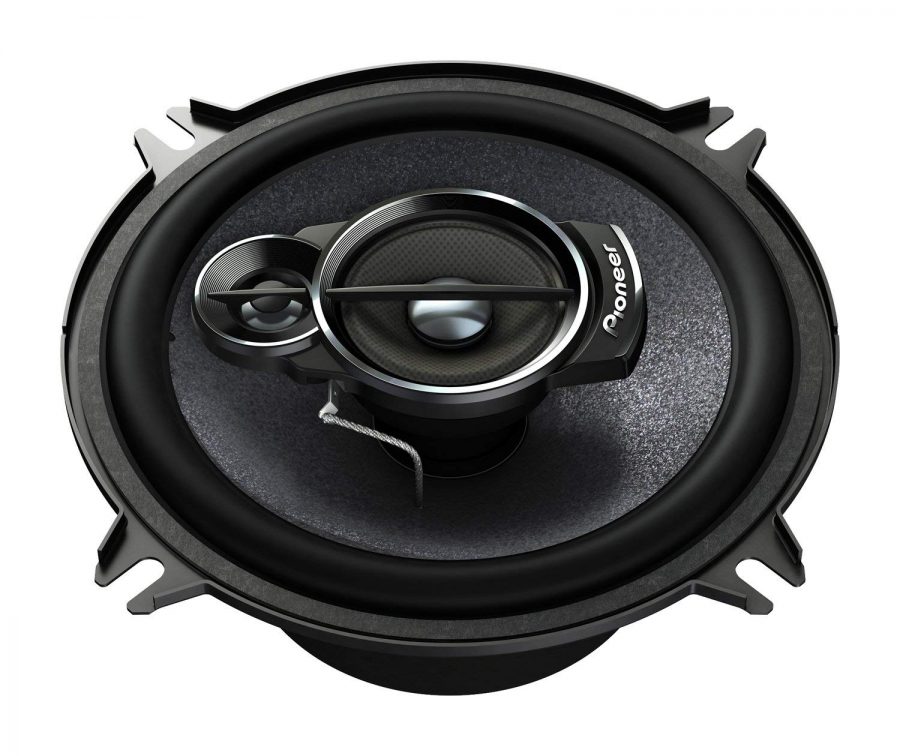
- Type of facility: car coaxial speakers
- Size: 16 cm
- Power: rated - 50 W, maximum - 300 W
- Ultimate Sensitivity (Volume): 89 dB
- Spectrum of reproduced tones: from 49 Hz to 31 000 Hz
- Impedance: 4 ohms
- Speaker sizes: Treble - 11 mm, Midrange - 42 mm, Bass - 130 mm
- Black color
- Warranty period: 1 year
- Diffuser material: mica-added polypropylene
- Number of speakers included: 2
- Bright external grid;
- Great sound in the budget segment;
- Good bass;
- Crystal clear sound at any volume;
- High ultimate power.
- Sufficiently low sensitivity;
- No lugs for wires.
Car speakers from the TS-A lineup, which features an extended frequency range. Despite the low cost, the speakers have rich bass and play well even without an external amplifier. High frequencies are as saturated and pure as professional speaker models.
To summarize
You can choose high-quality acoustics without the help of a specialist. To do this, pay attention to the technical specifications and quality of materials. Especially popular is coaxial speakers with combined speakers. It is cheaper than full-fledged three-way systems, but has good sound quality. Even in the budget segment, you can find a quality device for little money. To do this, compare the prices and characteristics of different acoustics.